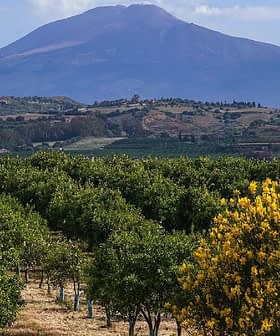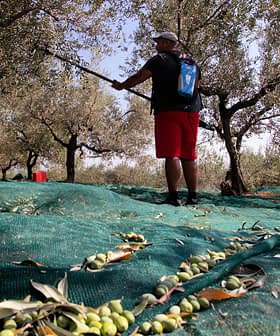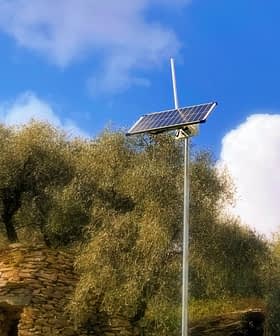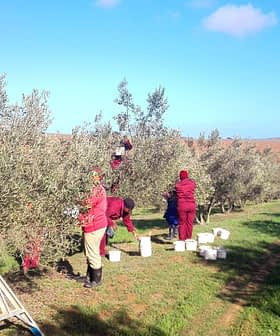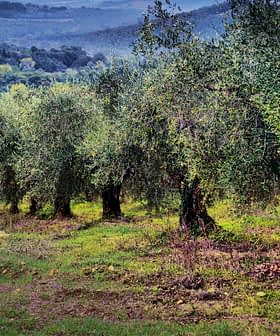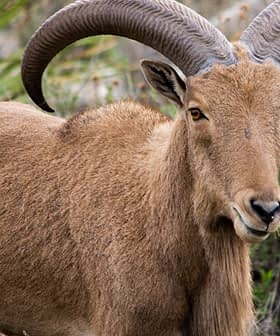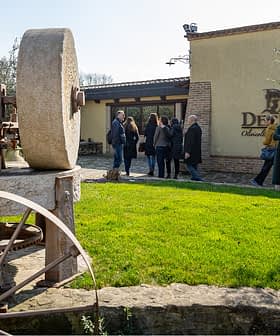Growers and Producers in Italy Anticipate a Challenging Harvest
Rising production costs combined with lower-than-expected yields in some parts of Italy will force many olive-related companies to make tough decisions.
 Cisternino, Italy
Cisternino, Italy Italian olive growers are facing challenges ahead of the 2022 harvest due to rising production costs and the consequences of a dry year. The Institute of Services for the Agricultural and Food Market predicts a decrease in olive oil production for the 2022/23 crop year, with significant drops expected in Puglia and Calabria.
The resilience of Italian olive growers is being put to the test ahead of the 2022 harvest. Farmers face rapidly rising production costs and the consequences of one of the driest years on record.
In its recently-published report, the Institute of Services for the Agricultural and Food Market (Ismea) warned that production in the 2022/23 crop year could fall well below the 329,000 tons of 2021/22.
The disproportionate increase in energy costs is likely to make production and processing activities for companies in the olive oil sector financially and economically unsustainable.
Ismea attributed the production decrease to many regions entering an ‘off-year’ in the olive tree’s alternate bearing cycle, the effects of which have been exacerbated by the severe drought and intense heat waves.
Olive oil production in Puglia and Calabria – the two largest producing regions in the country, which account for more than half of the national yield – is expected to drop significantly. Ismea expects central Italian regions such as Tuscany to recover some of their production potential after recent rainfall.
See Also:2022 Harvest UpdatesHowever, the agency added that more precise harvest estimates would not be available for a few more weeks.
Regardless of how the harvest goes, farmers and millers face another set of challenges posed by staggering rises in a range of production costs. For example, diesel and nitrogen fertilizer prices have increased by 129 percent and 170 percent, respectively, a recent report found.
“The disproportionate increase in energy costs is likely to make production and processing activities for companies in the olive oil sector financially and economically unsustainable,” Cristiano Fini, the president of the Confederation of Italian Farmers, told Olive Oil Times.
He added that the rising costs come on top of the immense pressure the sector already faces from extreme weather events, water shortages for irrigation, the continued spread of Xylella fastidiosa and the olive fruit fly infestations.
Coldiretti, a farmers’ association, and Unaprol, an olive producers’ association, warned of a 30 percent drop in olive oil production, with at least 9 percent of olive-related companies at risk of closing down due to the excessive costs.
Lower yields and rising costs have forced many olive growers to invest fewer resources to maintain their trees, which also is expected to impact future olive production.
“We are close to the starting of the 2022/23 crop year, and farmers need to get ready for a complex harvest which could become even more difficult given the uncertainties among olive oil millers,” Fini said.
“In the last few weeks, many of them have expressed concern for high energy costs and the crazily high bills companies are receiving nowadays,” he added. “Some have suggested that they might even not open their mills at all.”
According to Ismea, Italian farmers have seen their costs rise 24 percent in the first six months of 2022, led by increases of 50 percent in energy and 36 percent in fertilizer. Overall, olive growers have recorded a 19-percent increase in costs in the first half of 2022 compared with 2021.
In its report, Ismea said many of those unexpected costs result from global supply chain issues and rising inflation, both of which have been exacerbated by the Russian invasion of Ukraine.
See Also:Best Olive Oils From ItalyRising costs have spread to all sectors of the olive and olive oil economy, from producers to consumers, many of whom have been burdened by rising energy bills and food prices.
The Confederation of Italian Farmers estimates that transforming a quintal (100 kilograms) of olives will cost between €11 and €27 this year, depending on the region and technology.
“But we are also reporting high costs for bottling and packaging materials, with costs at least doubled for glass bottles, tin cans, cardboards and plastics,” Fini said. “All of this will inevitably affect olive oil prices for the consumers.”
In its report, Ismea noted most olive oil companies also expect extra virgin olive oil sales to decrease as families look to cheaper alternatives to save money. “Inflation is now at 8.4 percent,” Fini said. “This means that families must make hard choices and turn to lower quality products.”
“The government should immediately enact production cost containment policies, such as caps on natural gas and electricity prices, while also supporting families with bonuses or wage adjustments because on food and health we cannot and should not economize,” he added.
The challenges of the 2022 harvest come as annual olive oil production figures continue to fall in Italy. According to the International Olive Council, Italy produced an average of 597,000 tons of olive oil from 2000 to 2010. However, these figures fell to slightly more than 350,000 in the following decade.
“Such reduction is due to several factors, such as the phytosanitary emergencies such as Xylella fastidiosa in Salento and climate change, which is impacting on the main phenological phases of the olive tree,” Fini said.
“[Other factors include] the regulatory reform regarding the olive fruit fly, which banned the most efficient pesticides used to curtail its spread and introduced bio-control means whose efficacy is often limited by the effects of climate change,” he added. “We should also consider the non-renewal of the olive groves. Due to regulations, in Italy, it is still very complex to replace scarcely productive olive trees.”
According to Ismea, Italy’s olive sector turnover reached approximately €3.2 billion in 2019, representing 2.2 percent of the whole economic value of the Italian agrifood industry.
“Olive farming represents a pillar both for occupation and for the economy, so we need to continue to invest in the sector at all levels – research, education, new mills and company renewals,” Fini concluded.
Share this article


